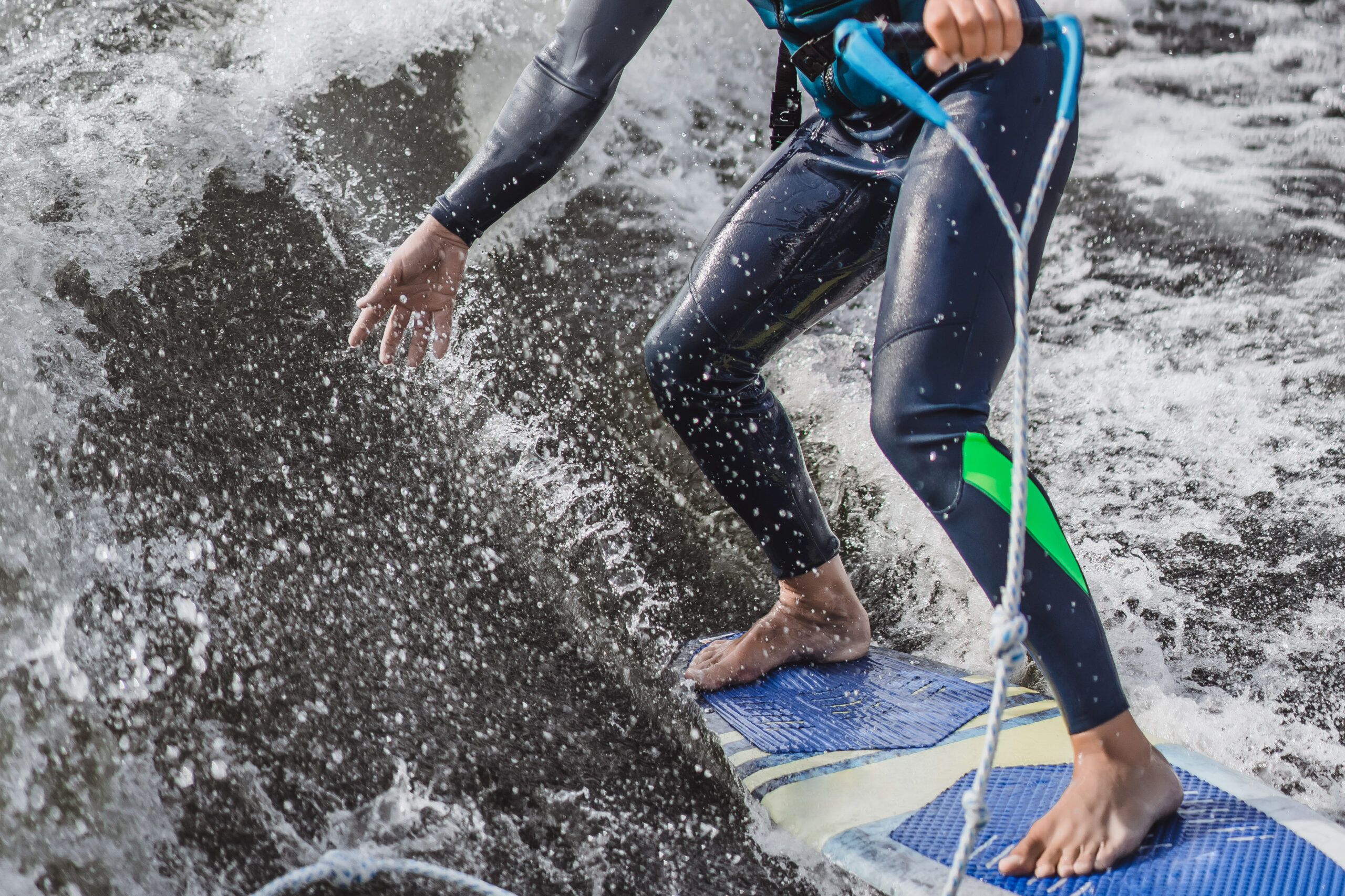Windsurfing, also known as sailboarding, is a surface water sport that combines elements of surfing and sailing. Participants stand on a board similar to a surfboard and control a maneuverable sail that harnesses the power of the wind to propel them across the water. In this article, we will explore the physics and mechanics behind how windsurfing works.
The Windsurfing Board
The board used for windsurfing is similar to a surfboard, but is slightly larger and contains a mast track, allowing insertion of the sail. Windsurfing boards come in different sizes and shapes depending on skill level and intended use. Beginner boards are wide and long for stability, while advanced boards are narrower and shorter for speed and maneuverability. The bottom of a windsurfing board is flat to plane on top of the water when catching strong winds. Fins underneath provide directional stability.
The board must be buoyant enough to support the sailor’s weight and withstand the pressure of the wind in the sail. Polyurethane foam and fiberglass composites create a lightweight yet sturdy board. The mast track runs lengthwise down the middle of the board. This enables the sailor to insert the mast and secure it in place. The sail can then be pivoted around the mast to catch the wind from any direction.
Here is a table comparing beginner and advanced windsurfing boards:
| Beginner Board | Advanced Board | |
|---|---|---|
| Length | Long | Short |
| Width | Wide | Narrow |
| Bottom shape | Flat | Concave |
| Fins | 1-2 fins | 3-4 fins |
| Weight | Heavy and stable | Light and fast |
The Sail
The windsurfing sail is made from a flexible material like nylon or polyester that can capture wind. Battens are horizontal strips in the sail that help maintain its aerodynamic shape. The sailor holds onto a wishbone boom that allows them to orient and control the sail. Lines attach the boom and battens to the mast and are pulled to change the sail’s shape.
The sail works by using the Bernoulli principle. As wind flows around the curved sail, the pressure is lower on the convex side than the concave side. This creates lift that counters the sailor’s weight and propels the board. The sail’s aerodynamic shape concentrates speed low in the center and redirects air flow. This generates forward thrust to push the sailor and board across the water.
There are different sail sizes for various wind conditions. Larger sails of 6-8 square meters are used in light winds to generate more power. Smaller sails of 3-5 square meters are for strong wind conditions when less sail area is needed. Advanced sailors may have multiple sails to switch between for optimal performance.
Harnessing the Wind
Catching and controlling the wind is key to windsurfing. Sailors steer into the wind at an angle to fill the sail. Pointing too close into the wind will cause the sail to luff or flap uselessly. Opening up the angle creates lift for acceleration. Once moving, sailors can then catch stronger winds and generate more speed.
Foot straps allow riders to lean back away from the sail and use their body weight as a counterbalance. This provides leverage for steering the sail. Windsurfers use their hands to pull and release the wishbone to orient the sail. They can pivot the mast with their rear hand to catch wind shifts. Their feet steer the board itself. Balance and coordination are required to control the sail and board together.
Advanced windsurfers learn to harness the power of strong winds for high speeds and jumping. They can ride waves and execute turns and spins mid-air. Mastering the technique allows windsurfers to essentially fly above the water. With the wind and waves constantly shifting, it is a dynamic and demanding sport.
To conclude, the physics of wind, sails, and hydrodynamics all converge in the sport of windsurfing. Maneuvering the interplay between wind and water propels riders to thrilling speeds. With practice, windsurfers can harness the power of nature and ride the waves of the open sea. Though challenging to learn, mastering wind and wave creates an unparalleled experience.



0 Comments